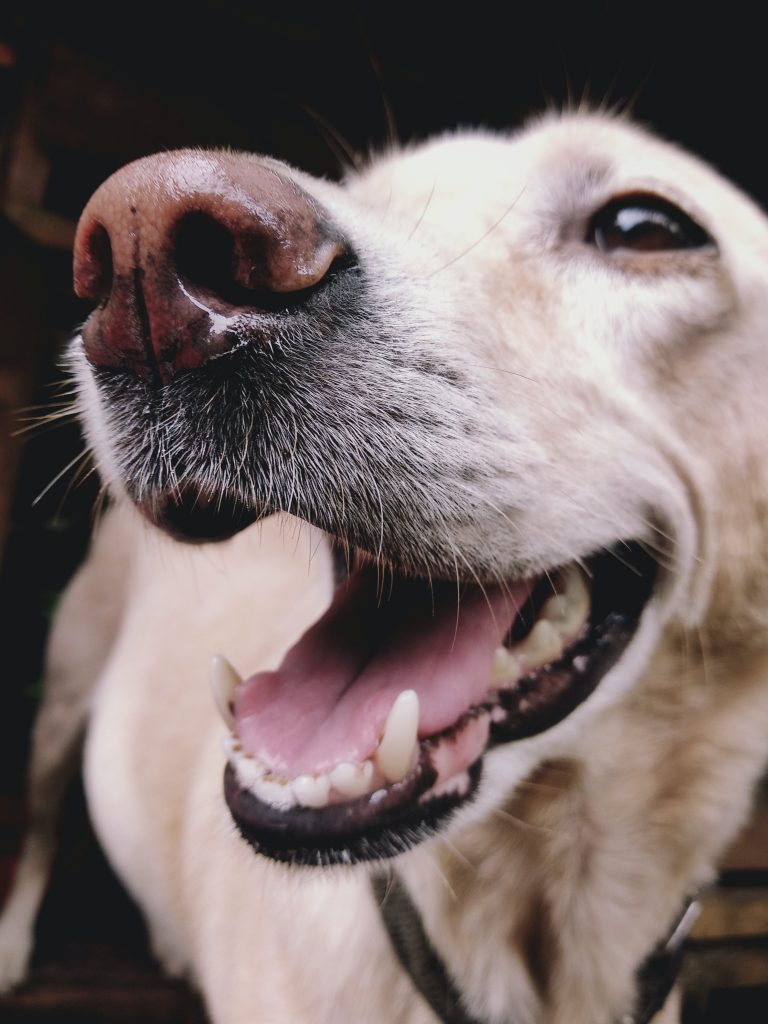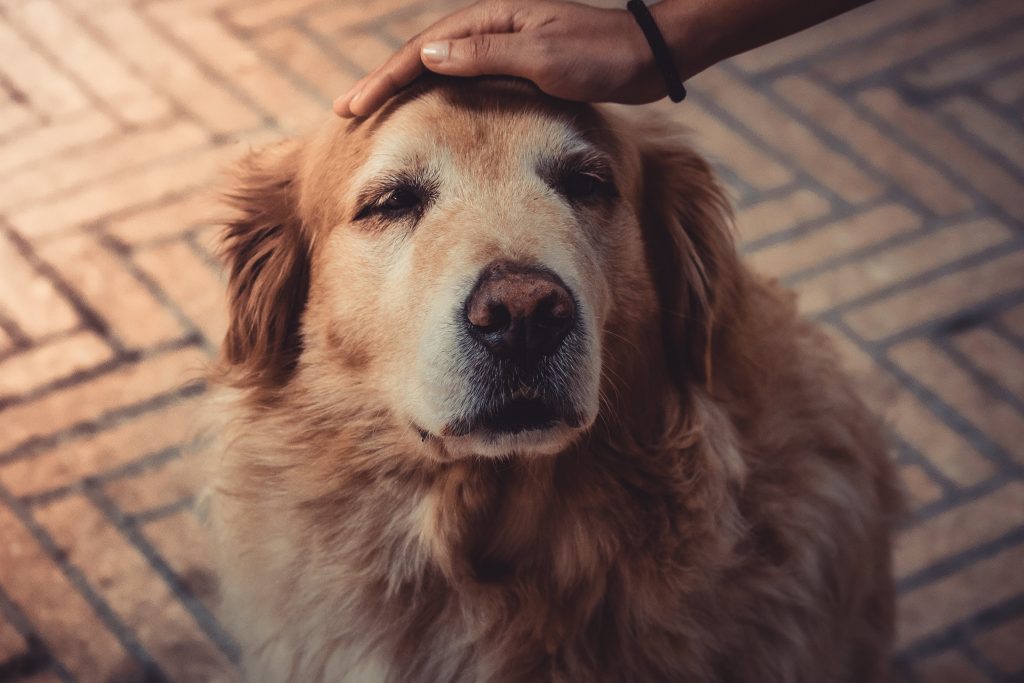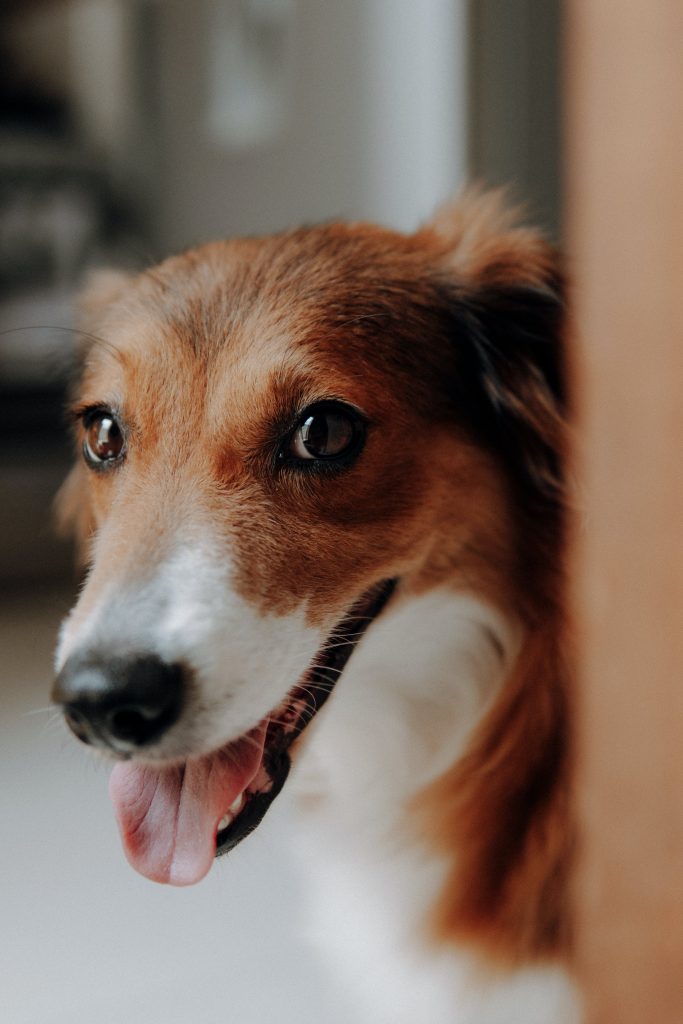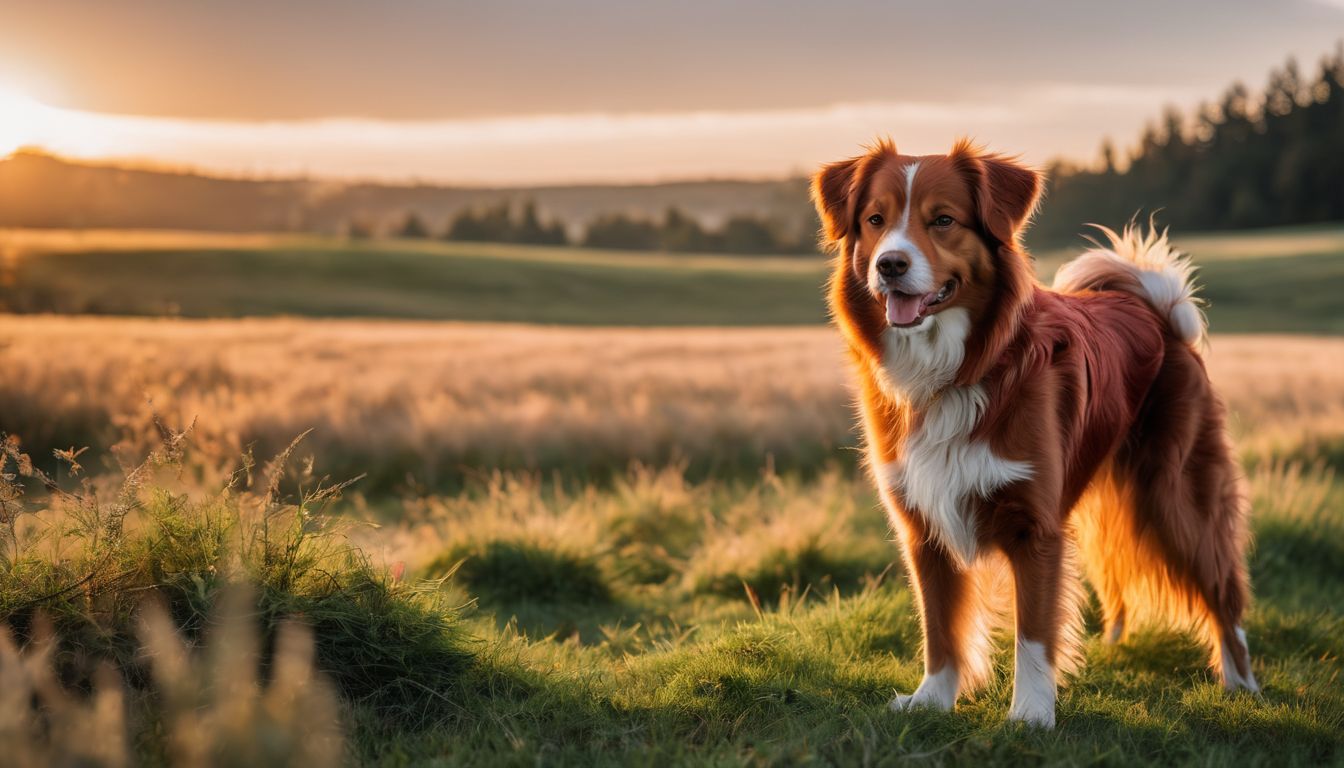Is your fiery, red-furred dog gradually shifting to a blonde hue? This change in coat color is something that baffles many dog owners. In this blog post, we delve into the science behind this puzzling color fade and investigate its various causes – from aging to genetics and beyond. Why is my red dog turning blonde?
Keep reading if you’re curious about what’s causing your red-headed pooch to turn blonde!

Key Takeaways
- Red dogs can turn blonde due to genetics, aging, environmental factors, and nutritional deficiencies.
- Aging can cause the pigments in a dog’s coat to fade over time, leading to a color change.
- Exposure to sunlight, chemicals or pollutants, and an improper diet can contribute to fur discoloration in red dogs.
- Nutritional deficiencies can also affect fur pigmentation in red dogs. Providing a balanced diet with essential nutrients is important for maintaining vibrant fur color.
Understanding Coat Color Changes in Dogs
Coat color changes in dogs are influenced by genetics, aging, environmental factors, and nutritional deficiencies.
The role of genetics
Genes play a big part in your dog’s fur color. These are passed down from the parents to the pups. Fur colors can be black, brown, red, yellow, or white. Some dogs have spots of different colors too! Changes in coat color often happen because of genes.
For example, some breeds start as black pups and turn white as they age.
Aging and its impact on coat color
As dogs get older, their fur color can change. This happens because the pigments in their coat naturally fade over time. So, if your red dog is turning blonde, it could be just a normal part of aging.
The sunlight can also play a role in this color change. If your dog has light-colored fur, exposure to the sun can cause their coat to become lighter or even turn blonde. It’s important to remember that environmental factors like diet and exposure to certain chemicals or pollutants can also affect a dog’s coat color as they age.
So, if you notice your red dog turning blonde as they get older, don’t worry too much – it’s just a natural part of the aging process.
Environmental factors that can cause discoloration
Exposure to sunlight, certain chemicals or pollutants, and an improper diet can all contribute to discoloration of a dog’s fur. When dogs are exposed to too much sunlight, especially if they have light-colored fur, their coat can fade.
Chemicals or pollutants in the environment can also affect the color of a dog’s fur. Additionally, an unhealthy diet lacking in essential nutrients may lead to changes in the pigmentation of a dog’s coat.
It is important to protect your dog from excessive sun exposure and provide them with a balanced diet to maintain their natural fur color.
Nutritional deficiencies
Proper nutrition plays a crucial role in maintaining your dog’s coat color. Nutritional deficiencies can lead to changes in fur pigmentation. For example, a lack of certain vitamins and minerals can cause the fur to become dull or fade.
Essential nutrients like omega-3 fatty acids are important for healthy skin and coat, while zinc helps maintain pigment production. If your red dog is turning blonde, it may be worth considering if their diet is providing all the necessary nutrients for vibrant fur color.

What Causes Red Dogs to Turn Blonde?
Red dogs can turn blonde due to a lack of melanin production, the influence of porphyrins, or excessive licking. Want to know more about these causes and how to prevent them? Keep reading!
Lack of melanin production
Dogs with red fur can turn blonde if they have a lack of melanin production. Melanin is the pigment that gives color to hair, skin, and eyes. When there is a decrease in melanin production, the red fur can fade and become lighter in color.
This can happen as dogs age or due to certain genetic factors. So if your red dog is turning blonde, it could be because their body is not producing enough melanin.
Influence of porphyrins
Porphyrins can have an influence on the color of your red dog’s fur. These natural pigments can cause stains that range in color from pink and red to orange or brown. Porphyrin stains usually occur when dogs lick themselves excessively, especially around their paws or other moist areas.
When porphyrins are present in the saliva, they can transfer onto the fur and create discoloration. It’s important to address excessive licking and treat any underlying causes to help prevent and minimize these porphyrin stains on your dog’s coat.
Excessive licking
Excessive licking can also contribute to fur discoloration in dogs. When dogs lick themselves excessively, it can lead to saliva stains on their fur, especially in areas that are constantly wet or irritated.
These stains can appear pink, red, or brown and may be difficult to remove. Excessive licking can also cause irritation or inflammation of the skin, which may further affect the color of the dog’s coat.
It’s important to address excessive licking by identifying and treating any underlying causes, such as allergies or anxiety. Regular grooming and providing distractions for your dog can help prevent excessive licking and maintain the original color of their fur.

How to Prevent and Treat Coat Discoloration
To prevent and treat coat discoloration, it is crucial to ensure your dog has a proper diet and nutrition, practice effective grooming techniques, and address excessive licking.
Proper diet and nutrition
A proper diet and nutrition play an important role in maintaining the health and appearance of your dog’s coat. Providing a balanced diet that is rich in essential nutrients can help prevent fur discoloration.
Make sure to feed your dog high-quality food that contains necessary vitamins, minerals, and fatty acids. These nutrients are crucial for healthy hair growth and pigmentation. Additionally, it is important to provide clean water at all times to keep your dog hydrated, which also contributes to a vibrant coat color.
A well-balanced diet with adequate protein helps promote melanin production, which is responsible for the pigmentation of your dog’s fur. Including foods such as chicken, fish, eggs, and cottage cheese can provide the necessary amino acids needed for healthy hair color.
Omega-3 fatty acids found in fish oil or flaxseed oil supplements can also support the natural shine and luster of your dog’s coat.
Grooming techniques
Regular grooming is essential for maintaining the health and appearance of your dog’s fur. Brushing your dog’s coat regularly helps to remove loose hair, preventing matting and reducing shedding.
Use a brush or comb suitable for your dog’s fur type to keep it looking its best. Bathing your dog with a mild shampoo can help remove any dirt or debris that may be causing discoloration.
Be sure to dry their coat thoroughly after bathing to prevent dampness from leading to yeast growth and further color changes. Additionally, keeping your dog’s ears clean and free from excessive wax buildup can help prevent infections that could potentially affect their fur color.
Treating excessive licking
Excessive licking in dogs can contribute to fur discoloration. If your red dog is turning blonde, it’s essential to address this issue. One way to treat excessive licking is by identifying and addressing the underlying cause.
Common reasons for excessive licking include allergies, skin infections, or anxiety. Consulting with a veterinarian can help determine the root cause and develop an appropriate treatment plan.
Additionally, providing distractions like chew toys and engaging in regular exercise can help redirect your dog’s attention away from excessive licking.

Conclusion
In conclusion, red dogs turning blonde is a natural process that occurs as they age. Genetics, environmental factors, and nutritional deficiencies can contribute to this color change.
By understanding these factors and taking proper care of your dog’s coat, you can help prevent or minimize fur discoloration. Always consult with a veterinarian if you have concerns about your dog’s coat color.
FAQs
1. Why is my red dog turning blonde?
The fading of your red dog’s fur to blonde can result from aging, genetics, or environmental factors.
2. What role does age play in the color change in dog fur?
Aging often leads to a coat color change in dogs. As they grow older, their fiery fur may start to fade and turn pink or brown.
3. How do genetics impact my poodle’s fur fading?
Genetics can cause variations in canine coat colors; some breeds like Poodles have genes that make their bright red hair pigmentation fade over time.
4. Can saliva stains lead to discoloration of dog fur?
Yes, saliva stains can cause rust-colored spots on your pup’s coat often making the red dog fur turn pink or even brown.
5.Does environment influence a red-haired dog’s fur turning from black to white?
Yes! Factors like harsh sun exposure and diet changes are environmental factors that could affect your pooch’s hair pigmentation and trigger color changes.
6.What should I know about puppy fur color changes?
Puppy coats often change as they grow due to natural processes and genetics which may give them a different shade such as transitioning from fiery-red to blonde when matured.


